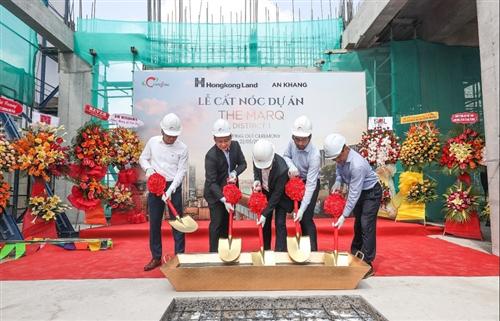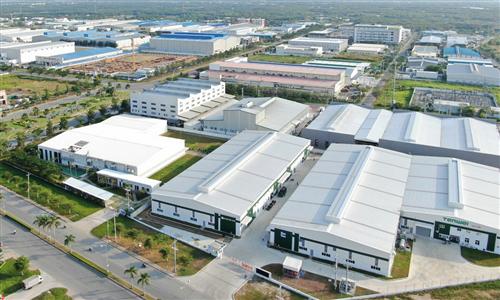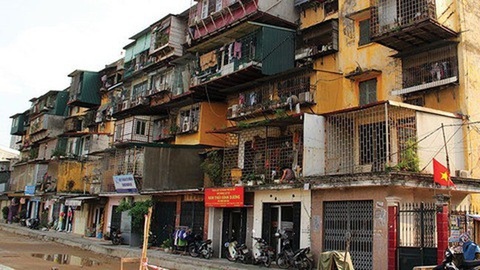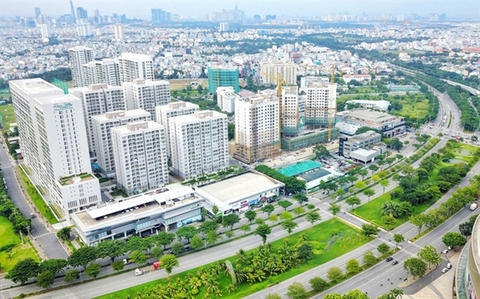Proposal to limit higher-end residences brings controversy
Proposal to limit higher-end residences brings controversy
The recent proposal from the Ministry of Construction to limit new investment in high-end residential property, including villas and high-rise apartments, due to already high inventories has been a cause for concern among industry experts and developers.
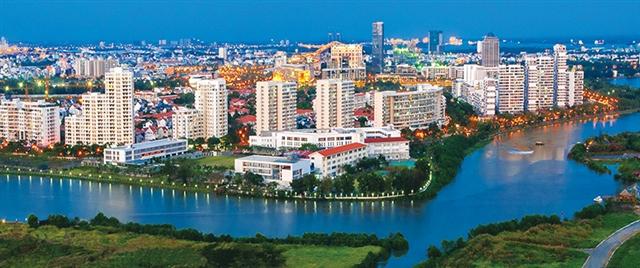
High-end property has been developing rapidly, and developers also want to increase supply in low- to mid-end segments, Photo: Le Toan
|
According to the Ministry of Construction (MoC), the proposal to limit high-end residences is based on the difficulties the real estate market is facing, both from the low liquidity resulting from COVID-19 and the oversupply of high- and mid-end properties, coupled with the shortage in the affordable segment.
The demand for housing in the mid- and high-end segment with prices above VND25 million ($1,000) per square metre only accounts for 20-30 per cent of the total, while the affordable segment accounts for 70-80 per cent of market demand.
There are more than 4,400 new residential and urban development projects nationwide with the total investment capital of VND4.8 quadrillion ($208.7 billion). Of this, the value of properties in inventory is VND104 trillion ($4.5 billion) by the end of March.
Aidan Wee, co-founder and executive director of PropNex Realty Vietnam, believed the proposal is a step in the right direction and will help redirect financial resources in the real estate sector and put the development capabilities of developers to better use. “This would encourage the supply of affordable housing to cater to the real demand of the urban population which is key to the sustainable development of the real estate market,” Wee told VIR.
Andy Han Suk Jung, CEO of SonKim Land also said that it is good that the government is making an effort to increase the supply in the low- to mid-end segments as the supply has been far below demand in the vast majority of the market.
He believed the price must be set by supply and demand, especially in the mid- and high-end markets, in the affordable segment the government has an important role to play by incentivising developers and by facilitating the approval process so that development cycle can be shortened.
“There are many pieces of land that are under government control. If those can be allocated for affordable and mid-end apartments, the supply can be increased in rather short order,” Jung said.
However, according to Wee, while it is a step in the right direction, the proposal will not be effective by itself.
“A more comprehensive legal framework must be developed by the MoC to support mass housing. The ministry could also introduce policies to curb speculation in the affordable housing segment and issue new incentives for developers to encourage them to roll out more projects in the segment,” he said.
Well-meaning as it may be, limiting the premium and luxury housing segments to force developers to focus on the affordable and mid-end segments might not be entirely reasonable because there is still demand for high-end housing with better amenities and living environment.
“Purposely limiting supply to these segments will cause a supply and demand imbalance to greatly widen prices across different segments and put premium and luxury products out of reach for the more affluent people,” Wee added.
Jung from SonKim Land also explained that limiting mid- to high-end products would not help the market as Vietnam’s middle-income population is growing rapidly who can afford better projects, while there is also steady demand by foreign buyers who are here to work or to invest in real estate.
At a while many people may be concerned that a restriction will only drive prices in the affected segments higher as demand will keep going up while supply is frozen. “I think it would be advisable to adopt a hands-off approach and let supply and demand set the prices, and help to intervene in the affordable segment to give incentives to developers and shorten lengthy procedures to encourage developers to do more and more,” said Han.
Stephen Wyatt, country head for JLL Vietnam, said that over the past few years the residential sector has been developing and there has been a considerable amount of new mid- and high-end apartments entering the market in both major cities of Hanoi and Ho Chi Minh City. Key factors to consider, according to Wyatt, are that the total supply of residential apartments is coming off a very low base, especially when compared to other Southeast Asian cities and the ratio of apartments to the population is still low.
At the same time, it has become incredibly difficult to find land within close proximity to the city centre. This has pushed land values to artificially high levels, which in turn has increased the prices of residential apartments. Moreover, the market needs to shift focus to more affordable housing, catering for the end user. However, this can only be achieved when there is more available land and land values are cheaper.
Wyatt added that the market needs to re-calibrate and focus on real demand and a balance of all sectors.
Meanwhile Damian Sung, sales director of Asia Bankers Club, told VIR that with the optimistic results of the fight against the pandemic in Vietnam, the real estate market should be largely unchanged. However, investors seeking distressed assets prove that this is not the case.
For those that have invested earlier, they will likely see the value of their properties go up as high-end supply is limited, with heightened interest in current inventories or new projects being launched this year. This will also boost the secondary market for foreign quotas as there are limited supplies of good development in both Ho Chi Minh City and Hanoi. “However, the bad part is that there will not be newer projects for the time being,” said Sung.
Instead of limiting the high-end segment, experts suggested the Vietnamese government to issue more incentives to encourage developers to invest in mid-end and affordable housing.





